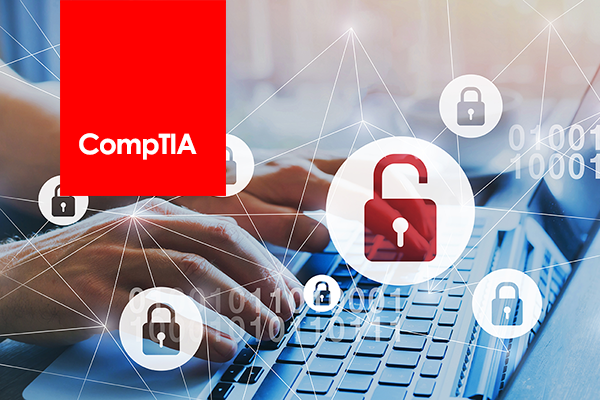CompTIA Cybersecurity Analyst (CySA+)


About this course
Cybersecurity certification is one of the hottest IT related certifications. The CompTIA Cybersecurity Analyst, also known as CompTIA CySA+, is a CompTIA certification. CySA+ is focused on the knowledge and skills required to perform the following:
- Configure and use threat-detection tools
- Perform data analysis
- Interpreting the results Securing an organization’s applications and systems is the primary goal of a Cybersecurity Analyst.
The CompTIA CySA+ is a vendor-neutral certification. A student normally has three to four years of experience in a related field as well as a Security+ or equivalent knowledge.
Cybersecurity certification is an ongoing requirement for government agencies. The CompTIA CySA+ was developed with a focus on meeting government requirements to certify IT, workers or contractors. With a Cybersecurity certification, you display an understanding of security best practices and protocols beyond that which is provided by the Security+ certification.
You will prove a level of expertise beyond that of basic security practices that are followed when using a computer. This allows any employee to prove a better understanding of enterprise security practices, and the necessary tools needed to protect a company network. The modules of this course align with the official objectives of the certification.
The course expands past the scope of the certification. It also provides real-life examples and lead-ins to direct further study. This will give students an easier understanding of the material for the certification as well as a basic understanding to apply to real-life applications.
Course Outline
Module 1: Threat Management
1.1 Introduction
1.2 Given a scenario, apply environmental reconnaissance techniques using appropriate tools and processes Part 1
1.3 Given a scenario, apply environmental reconnaissance techniques using appropriate tools and processes
1.4 Given a scenario, apply environmental reconnaissance techniques using appropriate tools and processes
1.5 Given a scenario, apply environmental reconnaissance techniques using appropriate tools and processes Part 4
1.6 Given a scenario, apply environmental reconnaissance techniques using appropriate tools and processes Part 5
1.7 Given a scenario, apply environmental reconnaissance techniques using appropriate tools and processes Part 6
1.8 Given a scenario, apply environmental reconnaissance techniques using appropriate tools and processes Part 7
1.9 Given a scenario, apply environmental reconnaissance techniques using appropriate tools and processes Part 8
1.10 Given a scenario, apply environmental reconnaissance techniques using appropriate tools and processes Part 9
1.11 Given a scenario, analyze the results of a network reconnaissance Part 1
1.12 Given a scenario, analyze the results of a network reconnaissance Part 2
1.13 Given a scenario, analyze the results of a network reconnaissance Part 3
1.14 Given a scenario, analyze the results of a network reconnaissance Part 4
1.15 Given a scenario, analyze the results of a network reconnaissance Part 5
1.16 Given a network-based threat, implement or recommend the appropriate response and countermeasure Part 1
1.17 Given a network-based threat, implement or recommend the appropriate response and countermeasure Part 2
1.18 Given a network-based threat, implement or recommend the appropriate response and countermeasure Part 3
1.19 Given a network-based threat, implement or recommend the appropriate response and countermeasure Part 4
1.20 Explain the purpose of practices used to secure a corporate environment Part 1
1.21 Explain the purpose of practices used to secure a corporate environment Part 2
1.22 Explain the purpose of practices used to secure a corporate environment Part 3
1.23 Explain the purpose of practices used to secure a corporate environment Part 4
Module 2: Vulnerability Management
2.1 Given a scenario, implement an information security vulnerability management process Part 1
2.2 Given a scenario, implement an information security vulnerability management process Part 2
2.3 Given a scenario, implement an information security vulnerability management process Part 3
2.4 Given a scenario, implement an information security vulnerability management process Part 4
2.5 Given a scenario, implement an information security vulnerability management process Part 5
2.6 Given a scenario, implement an information security vulnerability management process Part 6
2.7 Given a scenario, implement an information security vulnerability management process Part 7
2.8 Given a scenario, analyze the output resulting from a vulnerability scan Part 1
2.9 Given a scenario, analyze the output resulting from a vulnerability scan Part 2
2.10 Compare and contrast common vulnerabilities found in the following targets within an organization Part 1
2.11 Compare and contrast common vulnerabilities found in the following targets within an organization Part 2
2.12 Compare and contrast common vulnerabilities found in the following targets within an organization Part 3
